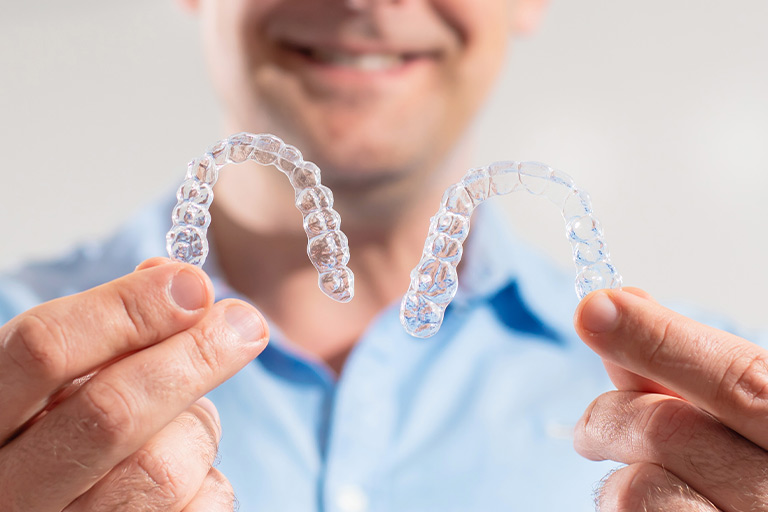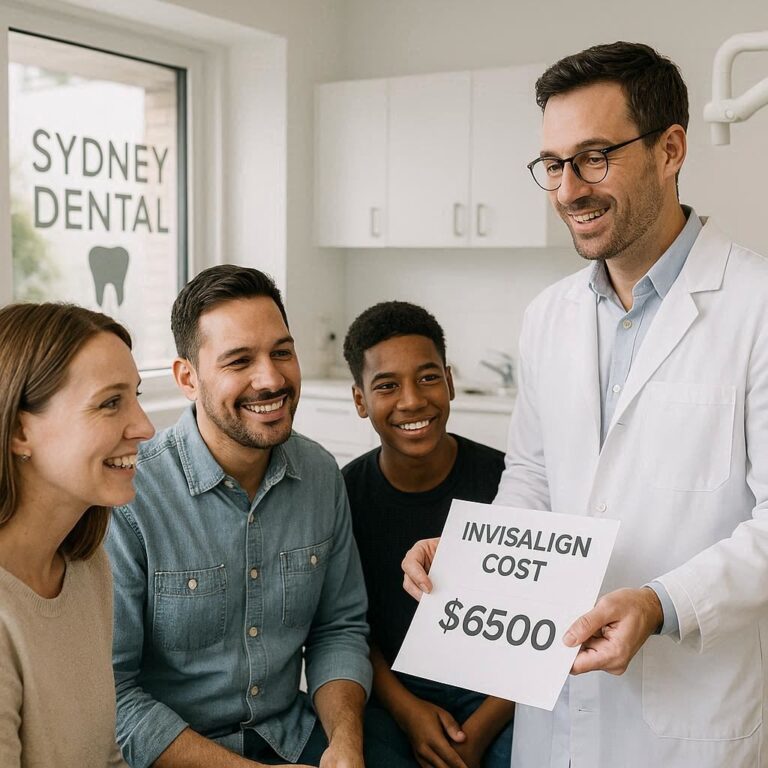A Guide to Free and Low-Cost Dental Clinics in New Mexico
New Mexico, the Land of Enchantment, is renowned for its vibrant cultures, stunning landscapes, and rich history. Yet, beneath this beautiful surface lies a silent and pervasive public health crisis: the lack of access to affordable dental care for a significant portion of its population. For thousands of New Mexicans—the working poor, the uninsured, the elderly on fixed incomes, and children in rural communities—a simple toothache can spiral into a debilitating medical and financial emergency. The pain is not just physical; it erodes the ability to eat nutritious food, seek employment with confidence, and participate fully in social life. This article serves as a comprehensive guide and a beacon of hope for those navigating this challenging landscape. It is a deep dive into the world of free and low-cost dental clinics across New Mexico, exploring not only where to find care but also how the system works, why these services are so critically needed, and what the future may hold for oral health equity in the state. Our goal is to empower you with knowledge, connect you with resources, and shed light on the dedicated providers and organizations working tirelessly to heal their communities, one smile at a time.

Chapter 1: Understanding the Landscape of Dental Care in New Mexico
To fully appreciate the role of free clinics, one must first understand the environment in which they operate. The challenges are multifaceted, rooted in economics, geography, and systemic healthcare gaps.
The State of Oral Health: A Statistical Overview
The oral health of New Mexicans, according to state and national surveys, paints a concerning picture. The New Mexico Department of Health and organizations like the Kaiser Family Foundation consistently report that the state ranks among the worst in the nation for key oral health indicators. For instance, the percentage of adults who have visited a dentist in the past year is significantly lower than the national average. More alarmingly, tooth decay remains the most common chronic disease of childhood, affecting a disproportionate number of low-income and Native American children. The prevalence of edentulism (complete tooth loss) among seniors is also higher than in many other states. These statistics are not mere numbers; they represent real people suffering from preventable pain and infection.
Barriers to Care: Why So Many New Mexicans Go Without
The reasons behind these poor outcomes are complex and interconnected:
-
Poverty and Financial Constraints: New Mexico has one of the highest poverty rates in the U.S. For families living paycheck to paycheck, a dental cleaning costing $100-$150 is a luxury they simply cannot afford. Even for those with dental insurance, high deductibles and copays can be prohibitive.
-
Dental Deserts: Vast areas of New Mexico are rural or frontier, with some counties having no practicing dentist at all. Residents in these “dental deserts” may face drives of several hours to reach the nearest provider, a journey complicated by a lack of reliable transportation and the cost of gas.
-
Workforce Shortages: The state suffers from a critical shortage of dental professionals, particularly those who accept public insurance. Recruiting and retaining dentists, especially in remote areas, is an ongoing challenge.
-
Limited Dental Medicaid (Centennial Care) Coverage: While Medicaid for children in New Mexico provides a robust dental benefit, adult coverage has historically been extremely limited, often covering only emergency extractions and pain relief, not preventive or restorative care like fillings or crowns. Recent expansions have begun to address this, but awareness and provider participation remain issues.
-
Cultural and Linguistic Barriers: In a state with diverse populations, including a large Hispanic and Native American communities, language differences and cultural perceptions of dental care can create additional obstacles to seeking treatment.
The Ripple Effect: How Oral Health Impacts Overall Well-being
The mouth is the gateway to the body, and poor oral health has profound consequences far beyond a smile. Chronic oral infections like periodontitis have been linked to serious systemic conditions, including:
-
Cardiovascular Disease: Bacteria from inflamed gums can enter the bloodstream, contributing to the hardening of arteries and increasing the risk of heart attack and stroke.
-
Diabetes: Periodontal disease can make blood sugar harder to control, and diabetes, in turn, increases the risk of gum disease—a vicious cycle.
-
Respiratory Infections: Inhaling bacteria from the mouth and throat can lead to pneumonia, particularly in the elderly.
-
Adverse Pregnancy Outcomes: Gum disease has been associated with preterm birth and low birth weight.
Furthermore, the social and economic impacts are devastating. Dental pain is a leading cause of school absences for children. For adults, visible dental problems can lead to embarrassment, social isolation, and discrimination in the job market, perpetuating the cycle of poverty.
Chapter 2: The Ecosystem of Free and Low-Cost Dental Care
The response to this crisis is a patchwork of different types of providers, each playing a vital role. Understanding this ecosystem is key to finding the right help.
Federally Qualified Health Centers (FQHCs): The Backbone of Public Dental Health
FQHCs are community-based healthcare providers that receive funds from the federal HRSA (Health Resources and Services Administration) to provide primary care services in underserved areas. They are a cornerstone of the safety-net system. Most FQHCs in New Mexico operate dental clinics alongside their medical services. They provide care on a sliding fee scale based on income and family size, making them affordable for most. They also typically accept Medicaid, Medicare, and private insurance.
Examples include:
-
First Choice Community Healthcare (Multiple locations in Bernalillo, Sandoval, and Valencia Counties)
-
La Familia Medical Center (Santa Fe and Española)
-
Ben Archer Health Center (Multiple locations in Southern New Mexico)
-
Presbyterian Medical Services (PMS) (Operates clinics in numerous rural communities statewide)
Non-Profit and Charitable Clinics
These organizations operate solely on grants, donations, and volunteer labor to provide free or very low-cost care to those most in need. They often target specific populations, such as the uninsured and homeless.
Prime examples are:
-
The St. Joseph Community Health Free Dental Clinic (Albuquerque): A well-established clinic run largely by volunteer dentists and hygienists, offering extractions, fillings, and cleanings to qualifying adults.
-
Albuquerque Health Care for the Homeless: Provides integrated medical and dental care specifically for the homeless population, understanding their unique challenges.
Mission of Mercy and Large-Scale Temporary Clinics
These are dramatic, large-scale events that transform convention centers or fairgrounds into massive dental clinics for a weekend. Staffed entirely by volunteers, they provide free care to thousands of patients on a first-come, first-served basis. The New Mexico Mission of Mercy (NMMOM), organized by the New Mexico Dental Association Foundation, is the premier example. While patients can receive significant care like extractions, fillings, and cleanings, the events are often characterized by long lines and cannot address ongoing dental needs.
Dental Schools and Hygiene Programs: Care from the Next Generation
Dental and dental hygiene students need live patients to train on, and they provide care at a significantly reduced cost under the close supervision of licensed, experienced faculty. The University of New Mexico (UNM) School of Medicine’s Division of Dental Services is the only academic dental program in the state. Their clinics in Albuquerque offer a wide range of services at lower prices. Additionally, dental hygiene programs at community colleges like Central New Mexico Community College (CNM) in Albuquerque offer low-cost cleanings, X-rays, and sealants to the public.
Government Assistance: Medicaid (Centennial Care) in New Mexico
Understanding Medicaid is crucial. In New Mexico, the program is called Centennial Care. For children under 21, it provides comprehensive dental benefits through managed care organizations (MCOs). For adults, the benefits have expanded but are still more limited than for children. As of 2025, adult coverage includes exams, X-rays, cleanings, fillings, root canals on front teeth, crowns, deep cleanings, and dentures, though prior authorization may be required. The key challenge is finding a dentist who accepts new Medicaid patients.
Types of Safety-Net Dental Providers in New Mexico
| Provider Type | Funding Model | Cost to Patient | Services Typically Offered | Ideal For |
|---|---|---|---|---|
| Federally Qualified Health Center (FQHC) | Federal grants, insurance, sliding fees | Sliding scale based on income | Comprehensive (Preventive, Restorative, Emergency) | Families, individuals needing ongoing, comprehensive care. |
| Non-Profit Charitable Clinic | Donations, grants, volunteers | Free or minimal donation | Basic (Extractions, Fillings, Cleanings – often limited) | Uninsured, low-income adults without other options. |
| Mission of Mercy Event | Donations, volunteers | Free | Emergency & Basic (Extractions, Fillings – one-time event) | Anyone in immediate need, willing to wait in line. |
| Dental School/Hygiene Program | Academic funding, patient fees | Very low cost for services | Comprehensive, but appointments are longer | Patients with flexibility for longer appointment times. |
| Medicaid (Centennial Care) | State & Federal Government | Low or no copay | Comprehensive for children, limited for adults | Qualifying low-income children and adults. |
Chapter 3: A Regional Directory of Clinics and Resources
This directory is a starting point. Always call ahead to confirm hours, services, eligibility, and appointment availability, as details change frequently.
Northern New Mexico
-
La Familia Medical Center (Santa Fe): Offers medical, behavioral, and dental care on a sliding fee scale. A key provider for the Santa Fe area.
-
El Centro Family Health (Multiple Locations – Española, Las Vegas, Taos, etc.): A large FQHC network providing integrated care, including dental, to rural northern communities.
-
Taos Community Foundation’s Tooth Torque Program: A unique mobile dental van program that brings care directly to schools and communities in Taos County.
Central New Mexico (Albuquerque Metro Area)
As the state’s population center, Albuquerque has the highest concentration of resources.
-
First Choice Community Healthcare: Has multiple dental clinics throughout the metro area and surrounding counties (South Valley, Rio Rancho, Bernalillo).
-
UNM Dental Clinic: Offers comprehensive care at reduced costs. Multiple clinics specialize in different areas (e.g., Family Dental, Oral Surgery, Pediatric Dentistry).
-
St. Joseph Community Health Free Dental Clinic: A critical resource for uninsured, low-income adults, providing free extractions, fillings, and cleanings.
-
Albuquerque Health Care for the Homeless: Provides essential dental services tailored to the homeless population.
-
CNM Dental Hygiene Clinic: Offers extremely affordable preventive care, including cleanings, X-rays, and sealants.
Eastern New Mexico
-
La Casa Family Health (Portales, Clovis, Roswell): An FQHC providing critical medical and dental services to the agricultural and rural communities of the eastern plains.
-
Ben Archer Health Center (Clovis, Tucumcari): Part of a larger southern network, these clinics provide a sliding fee scale for dental care.
Southwestern New Mexico
-
Ben Archer Health Center (Hatch, Deming, Truth or Consequences): The primary FQHC for this region, operating several dental clinics.
-
Hidalgo Medical Services (Lordsburg, Silver City): Another vital FQHC network serving the rugged, rural communities of the Gila region.
Southeastern New Mexico
-
La Casa Family Health (Roswell, Carlsbad): Extends its FQHC services to the southeast, offering dental care.
-
Carlsbad Community Health Center: A local FQHC dedicated to serving the Carlsbad area.
Northwestern New Mexico & The Navajo Nation
This region faces some of the most severe access challenges.
-
Shiprock Dental Clinic (Northern Navajo Medical Center): A critical facility operated by the Indian Health Service (IHS) for enrolled Navajo members.
-
Rehoboth McKinley Christian Health Care Services (Gallup): Provides dental services on a sliding scale in an area with great need.
-
San Juan College Dental Hygiene Clinic (Farmington): Offers low-cost cleanings and preventive care to the public.
Chapter 4: A Patient’s Guide to Accessing Care
Knowing where to look is half the battle. Knowing how to navigate the system is the other.
Step 1: Determining Your Eligibility
Eligibility varies widely. For FQHCs, you will need to provide proof of income (pay stubs, tax returns) and residency to qualify for the sliding scale. For charitable clinics, you typically must be uninsured and fall below a specific poverty level. For Medicaid, you must apply through the New Mexico Human Services Department. Always ask the clinic directly about their specific eligibility requirements.
Step 2: Preparing for Your Appointment – Documentation and History
Be prepared to provide:
-
Photo ID
-
Proof of income for everyone in the household (last 30 days of pay stubs, previous year’s tax return, unemployment statement, SSI award letter)
-
Proof of address (utility bill, lease agreement)
-
A list of all current medications and medical conditions
-
Your dental and medical history
Step 3: What to Expect at Your First Visit
Your first appointment will likely be an examination and diagnosis. Due to high demand, you may not receive treatment on the same day. The dentist will create a treatment plan and schedule follow-up appointments. Be patient, as there are often waitlists for non-emergency care.
Step 4: Navigating Waitlists and the Urgent Care System
For non-emergency procedures, waitlists can be weeks or months long. If you are in severe pain, have swelling, or have experienced dental trauma, you have a dental emergency. In this case, you should:
-
Call FQHCs and explicitly state you have an emergency.
-
Go to a hospital emergency room if the pain is unbearable or swelling is affecting your breathing or vision. Note: ERs can only prescribe antibiotics for infection and pain medication; they cannot perform dental procedures.
Chapter 5: Beyond the Drill: Prevention and Public Health Initiatives
The most effective and affordable form of dentistry is preventing disease before it starts.
-
Community Water Fluoridation: Adjusting the fluoride in public water supplies to an optimal level for preventing tooth decay is one of the most successful and cost-effective public health measures in history. Many, but not all, New Mexico communities have fluoridated water.
-
School-Based Sealant Programs: Public health hygienists often go directly into schools, particularly those with high numbers of low-income children, to apply dental sealants—a protective coating that prevents up to 80% of cavities in back teeth.
-
The Role of Mobile Dental Vans: These fully-equipped clinics on wheels are essential for bridging the geographic gap, bringing care directly to remote schools, senior centers, and community events.
Conclusion: A Collective Responsibility for a Healthier New Mexico
Access to dental care is not a luxury; it is a fundamental component of overall health and human dignity. The network of free and low-cost clinics in New Mexico represents a courageous and compassionate fight against a daunting public health challenge. By supporting these clinics through volunteering, donations, and advocacy, and by empowering individuals with knowledge, we can work towards a future where every resident of the Land of Enchantment has the opportunity to enjoy a healthy, pain-free smile. The path forward requires sustained investment, innovative solutions, and a collective commitment to health equity for all.
Frequently Asked Questions (FAQs)
1. I have a severe toothache and swelling. What should I do right now?
This is a dental emergency. Contact FQHC dental clinics immediately and state your emergency. If you cannot get an appointment and the swelling is severe or you have a fever, go to the nearest hospital emergency room. They can address the infection and pain, though not the underlying tooth problem.
2. I don’t have any income right now. Will I still qualify for free care?
Yes, many clinics, especially FQHCs, have a sliding fee scale that goes down to $0 for those with no income. You will need to provide documentation of your lack of income, such as an unemployment statement or a signed declaration.
3. What is the difference between a “free clinic” and an FQHC with a “sliding scale”?
A “free clinic” typically operates on donations and volunteer staff and provides care at no cost to all qualified patients. An FQHC uses a sliding fee scale, where your cost is determined by your income and family size. For those at the lowest income levels, the cost can be zero or very low, effectively making it free.
4. Do any clinics provide dentures or partials for free or at low cost?
This is one of the most difficult services to find. Dentures are expensive and labor-intensive. Some FQHCs may offer them on their sliding scale, and the UNM Dental Clinic may provide them at a reduced cost. Mission of Mercy events sometimes have a limited number of denture spots. You will need to call around specifically and be prepared for a potential waitlist.
5. I live on the Navajo Nation. Where are my best options for care?
Your first point of contact should be the Indian Health Service (IHS) facilities, such as the Shiprock Dental Clinic or the Gallup Indian Medical Center. These are for enrolled tribal members. Rehoboth McKinley in Gallup and the San Juan College Hygiene Clinic in Farmington are also important resources for the wider community.
Additional Resources
-
New Mexico Department of Health – Oral Health Program: Provides data, resources, and information on public health initiatives.
-
New Mexico Dental Association Foundation: Organizes the Mission of Mercy and other charitable programs.
-
Website: https://www.nmdental.org/foundation/
-
-
Health Resources & Services Administration (HRSA) Find a Health Center Tool:
-
Website: https://findahealthcenter.hrsa.gov/
-
-
New Mexico Human Services Department (Medicaid – Centennial Care):
-
Website: https://www.hsd.state.nm.us/
-
-
UNM Division of Dental Services:
Disclaimer: The information in this article is for general guidance and informational purposes only. It is not a substitute for professional medical or dental advice. Clinic details, hours, and eligibility requirements can change frequently. Readers are strongly advised to contact the clinics directly to confirm their services, schedule appointments, and verify their eligibility before visiting.
Date: October 25, 2025
Author: The Public Health Information Team


